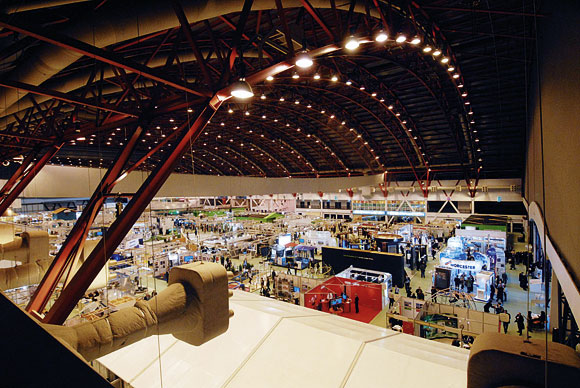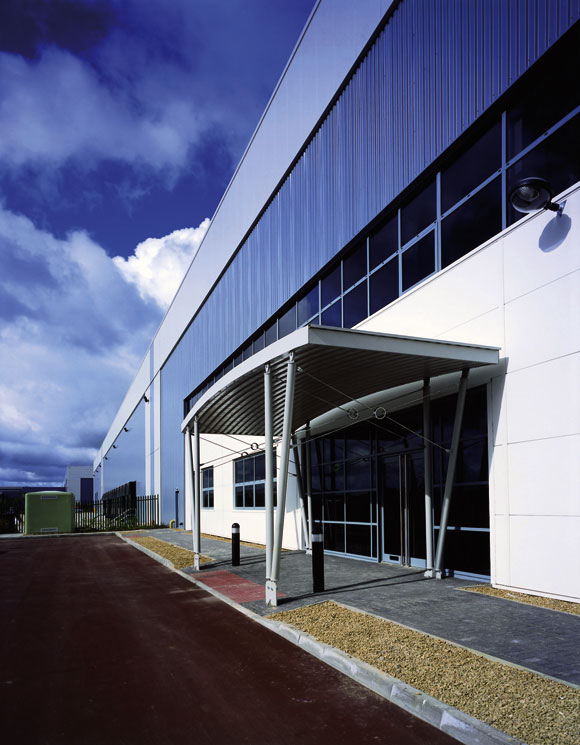Projects and Features
SCI leads the debate
Sustainability and off-site steel construction were at the forefront of debate at the recent Futurebuild and Ecobuild events.
Held at London Earl’s Court from 27 February to 1 March, both the conference programme and the exhibition provided a showcase for hundreds of companies offering sustainable design and construction products and services.
Known collectively as Innovations for the Built Environment, five complementary events – Futurebuild; Ecobuild, Regenex, Cityscape and Building for Health – offered an opportunity to focus on the most important themes affecting the built environment, and to reflect on the true complexity of the sector.
On the first day of the exhibition the Ecobuild seminar schedule included the ‘Great Materials’ debate, with Dr Michael Sansom, Manager Sustainability Group at SCI presenting the case for the sustainability of steel in construction.
Dr Sansom’s presentation explained that steel’s sustainable credentials were highlighted by the fact that 40% of the material is made from scrap. Steel is also a low waste product as 90% of by-products of iron and steel production are recycled. There is only a 1%-4% wastage during manufacture, but 100% can be recycled and there is zero waste on site.
‘Steel is also structurally efficient with a good strength-to-weight ratio,” said Dr Sansom. Steel also creates light structures, requiring fewer and lighter foundations which makes it ideal for brownfield developments.
The fact that steel dominates the warehouse sector amply demonstrates how the material creates long span solutions with open and flexible space.
Another important aspect of Dr Sansom’s presentation focussed on energy and carbon efficiency. Steel’s performance in this area was highlighted by a case study from Oxford University (click here).
In summary, Dr Sansom stressed steel wins on many fronts. Compared to off-site techniques, traditional building methods in urban locations cause numerous annoyances to local residents. The answer is off-site construction, which reduces the construction period, reduces site activity and associated vehicle movements, creates less dust and noise and reduces waste while increasing recycling.
Meanwhile, off-site construction methodologies were one of the main topics at the Futurebuild conference. Taking place on the final today of the exhibition, SCI again led the debate on steel technology with Dr Bassam Burgan, Deputy Director of SCI, chairing the ‘Steel Technology and Off-site Construction’ seminar.
Dr Martin Heywood, SCI Manager Construction Technology spoke on the benefits of off-site construction in urban locations specifically, where there is an ever-increasing demand for housing and supporting infrastructure. Together with a shortage of land, new buildings are invariably squeezed into small urban plots and this is where steel and off-site construction comes to the fore.
Some of the main benefits of off-site are quicker speed of construction, cost predictability and waste reduction. To support these benefits, Dr Heywood presented some projects which clearly demonstrated that off-site steel construction methods can deliver faster, better and more sustainable structures. For instance, the construction programme of a secondary school was achieved in 54 weeks instead of the 76 which would have been ordinarily expected.
The reductions of the impact of construction processes on site activity, such as noise, dust and commercial vehicle movements, were also noted, especially where volumetric modular systems were used. However, by far the greatest benefit was the virtual elimination of site generated waste.
Dr Heywood concluded: “RSLs (Registered Social Landlords) and public sector clients are placing great emphasis on sustainability and the impact of construction on local residents. Such focus represents a great opportunity for offsite steel construction.”














